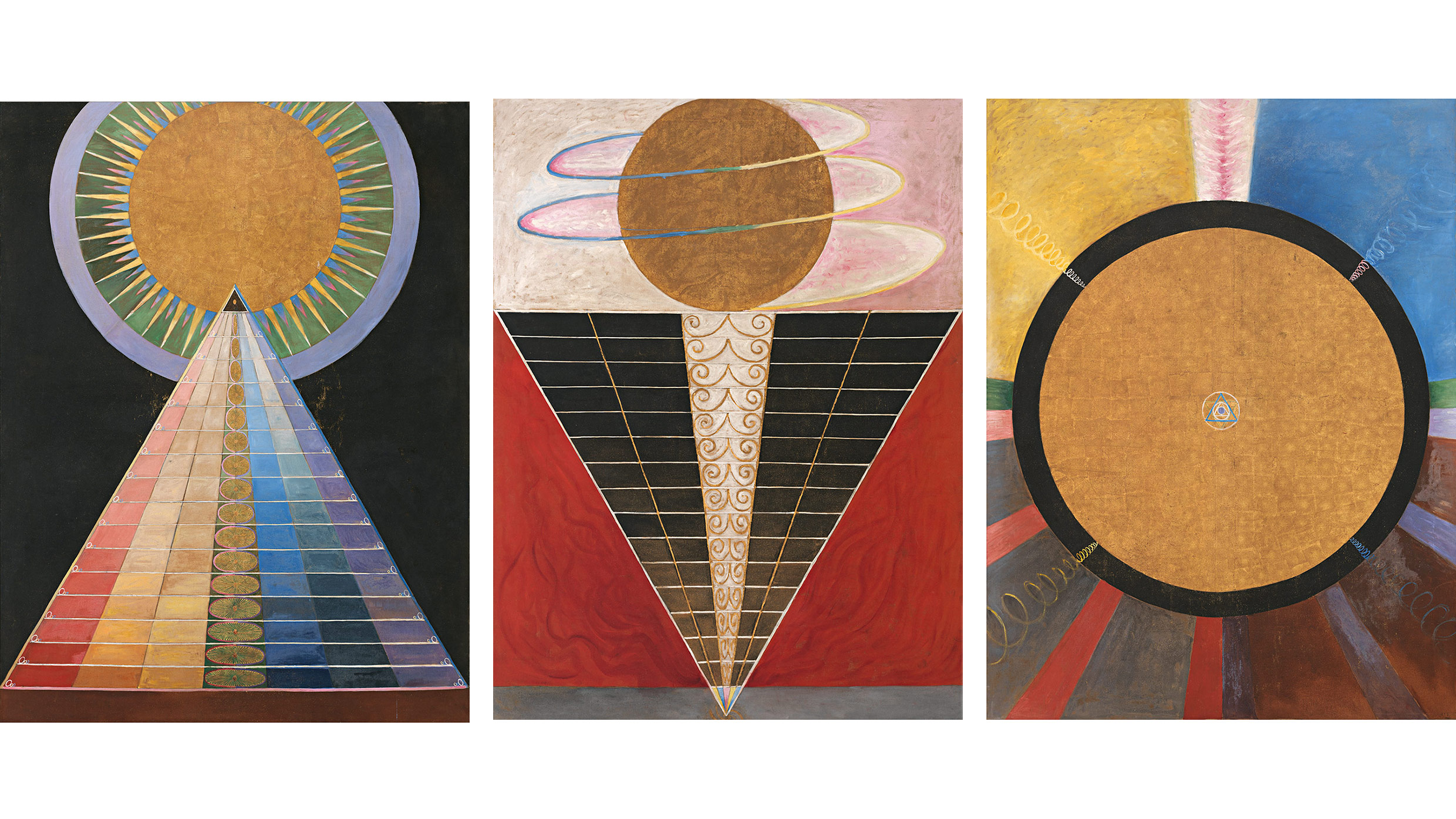“Every time I succeed in finishing one of my sketches, my understanding of humanity, animals, plants, minerals, or the entire creation, becomes clearer. I feel free and raised above my limited consciousness” — Hilma af Klint
Celebrating our love for abstraction and our deep fascination with the work of the visionary and pioneer Hilma af Klint!
Her groundbreaking paintings are now believed to have preceded Kandinsky’s as the very first abstract body of work in western art history. Her spiritual exploration through bold colors and symbols transcends time and challenges traditional notions of art and the human experience.
Af Klint was born in Stockholm in 1862 and went on to study at the city’s Royal Academy of Fine Arts, graduating with honors in 1887. She soon established herself as a respected painter in Stockholm, exhibiting deftly rendered figurative paintings and serving briefly as secretary of the Association of Swedish Women Artists. During these years she also became deeply involved in spiritualism and Theosophy.
When Hilma af Klint began creating radically abstract paintings in 1906, they were like little that had been seen before: bold, colorful, and untethered from any recognizable references to the physical world. It was years before Vasily Kandinsky, Kazimir Malevich, Piet Mondrian, and others would take similar strides to rid their own artwork of representational content.
Af Klint’s first major group of largely nonobjective work, The Paintings for the Temple. Produced between 1906 and 1915, the paintings were generated in part through af Klint’s spiritualist practice as a medium and reflect an effort to articulate mystical views of reality.

She imagined installing these works in a spiral temple, though this plan never came to fruition. In the years after she completed The Paintings for the Temple, af Klint continued to push the bounds of her new abstract vocabulary, as she experimented with form, theme, and seriality, creating some of her most incisive work.
Hilma af Klint died in 1944 at the age of 81, leaving her artistic estate of approximately 1,300 paintings and 125 notebooks to her nephew, Erik af Klint, who later created the Stiftelsen [Foundation] Hilma af Klints Verk.
Her works were kept largely private during her lifetime. Believing the world was not yet ready for her art, she stipulated that it should remain unseen for another 20 years. This notion comes from af Klint’s April 26, 1916 notebook where she wrote a channeled message addressed to her, “You are called to present in pictures a wonderful linguistic system which we term the influence of miraculous powers on people’s outer and inner lives.”
Ultimately, her work was all but unseen until 1986, and only over the subsequent three decades have her paintings and works on paper begun to receive serious attention.
Hilma lived in the intersection of art, science and the spirit — a fascinating space.
The “Paintings for the Future” (book) and “Beyond the visible” (excellent documentary) are great resources for those interested in learning more!

